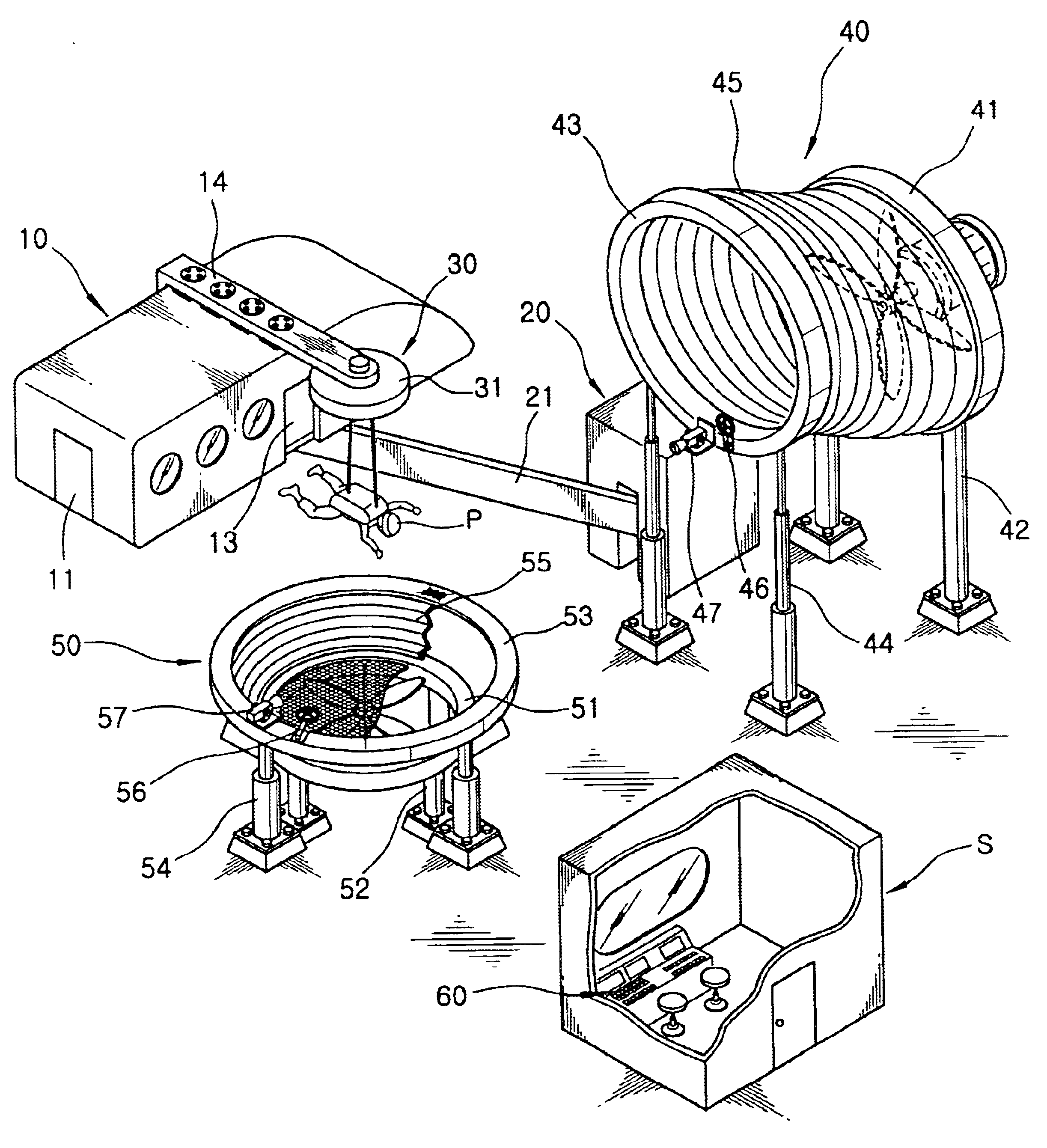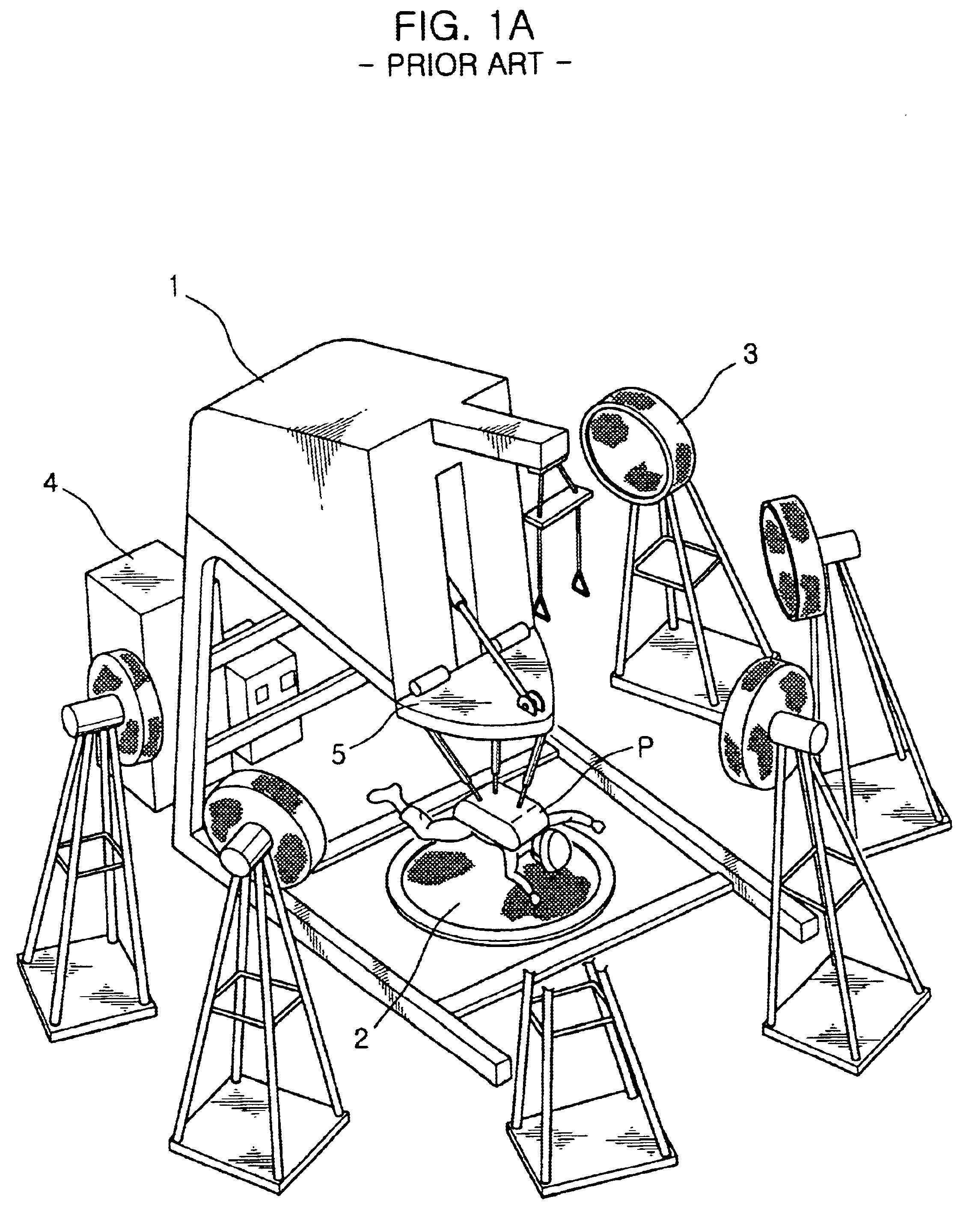Skydiving simulator and skydiving training process using the same
a simulator and simulator technology, applied in the field of simulator and skydiving training process, can solve the problems of reducing the activity and realism of skydiving training using the simulator, the japanese skydiving simulator does not have any means, and the skydiver to excessively waste labor and time while preparing, so as to reduce the leakage of air current, reduce the installation and maintenance cost, and reduce the effect of energy loss
- Summary
- Abstract
- Description
- Claims
- Application Information
AI Technical Summary
Benefits of technology
Problems solved by technology
Method used
Image
Examples
Embodiment Construction
[0042]Reference should now be made to the drawings, in which the same reference numerals are used throughout the different drawings to designate the same or similar components.
[0043]The construction of the skydiving simulator according to the preferred embodiment of the present invention will be briefly described with reference to FIGS. 3A to 9 prior to a detailed description of the elements of the simulator. As shown in the drawings, the skydiving simulator of this invention comprises: a model fuselage 10 for loading a skydiver therein; a fuselage drive unit 20 actuating the fuselage 10; a rotary hanger unit 30 mounted to the top wall of the fuselage 10 to be aligned with the central axis of a jumping door 13 and used for supporting the skydiver jumped from the jumping door 13 of the fuselage 10; a plurality of fan units 40 and 50 for horizontally forcing air into the front of the fuselage 10 in conjunction with a movement of the fuselage 10 actuated by the fuselage drive unit 20, ...
PUM
 Login to View More
Login to View More Abstract
Description
Claims
Application Information
 Login to View More
Login to View More - R&D
- Intellectual Property
- Life Sciences
- Materials
- Tech Scout
- Unparalleled Data Quality
- Higher Quality Content
- 60% Fewer Hallucinations
Browse by: Latest US Patents, China's latest patents, Technical Efficacy Thesaurus, Application Domain, Technology Topic, Popular Technical Reports.
© 2025 PatSnap. All rights reserved.Legal|Privacy policy|Modern Slavery Act Transparency Statement|Sitemap|About US| Contact US: help@patsnap.com



